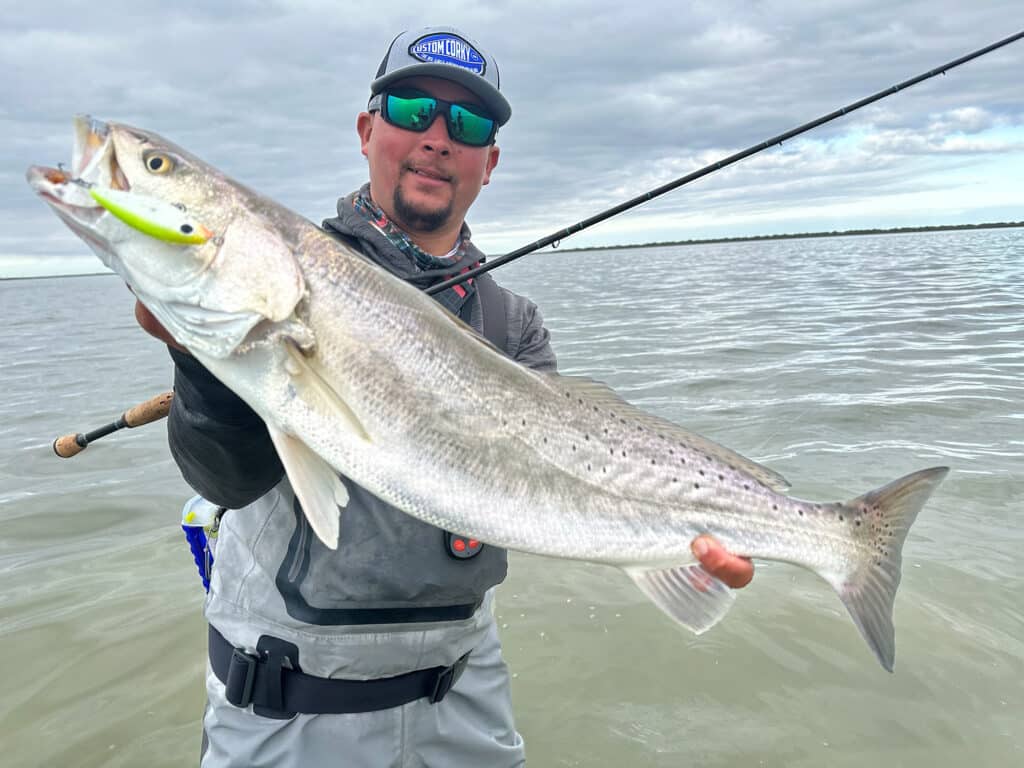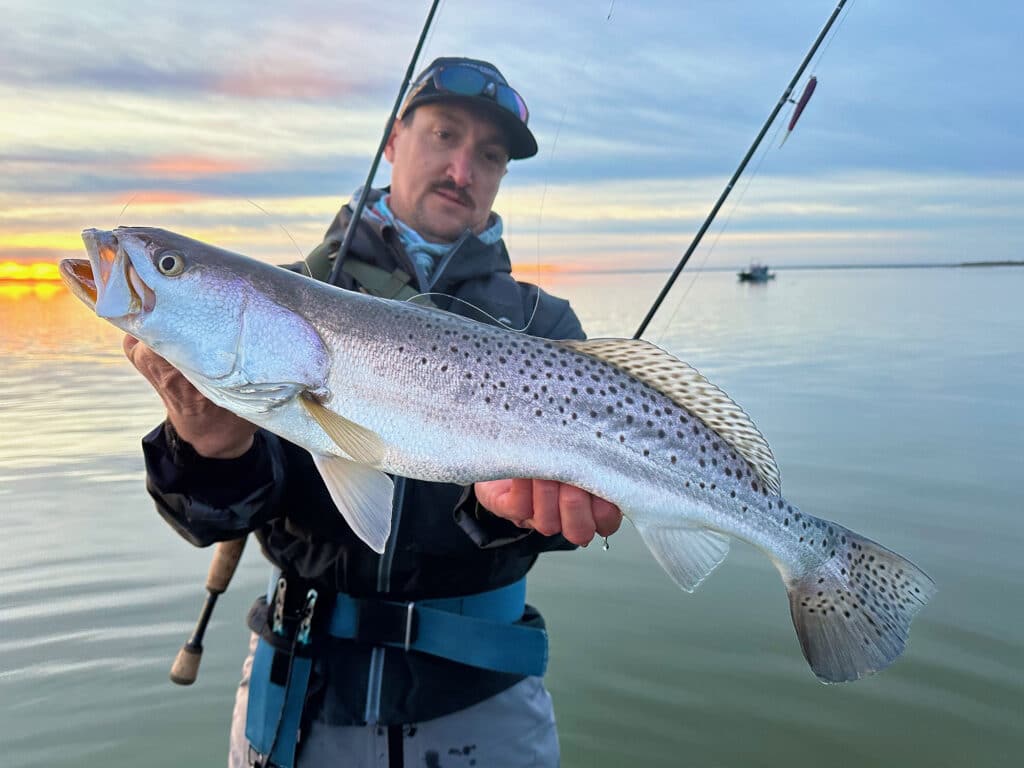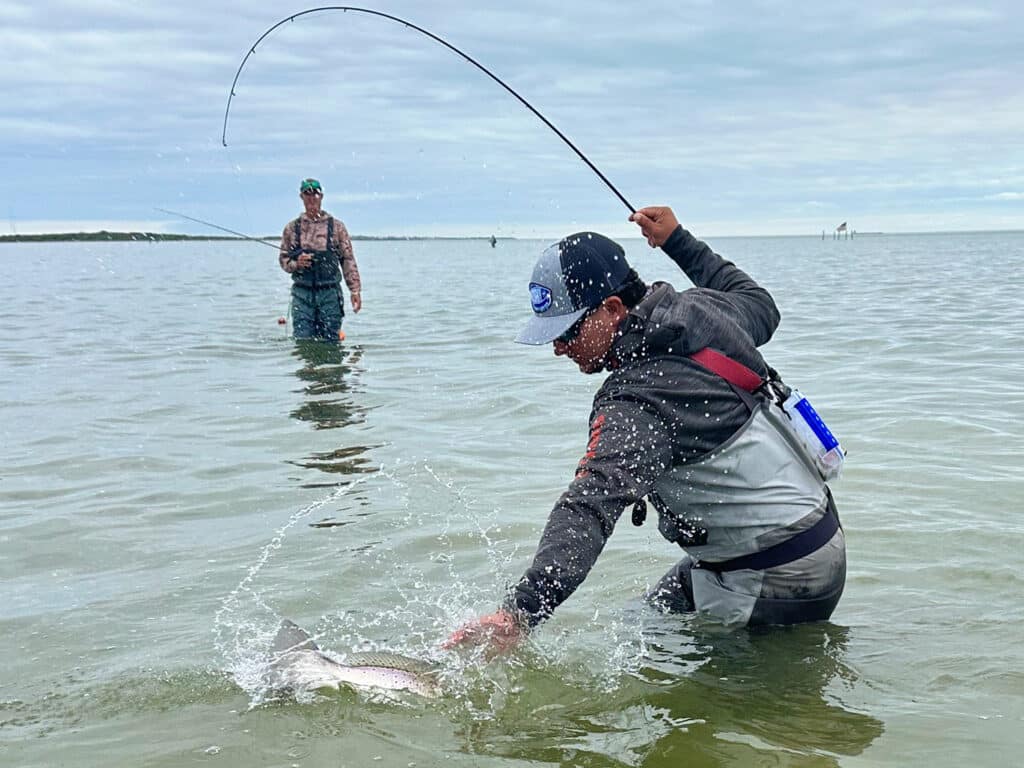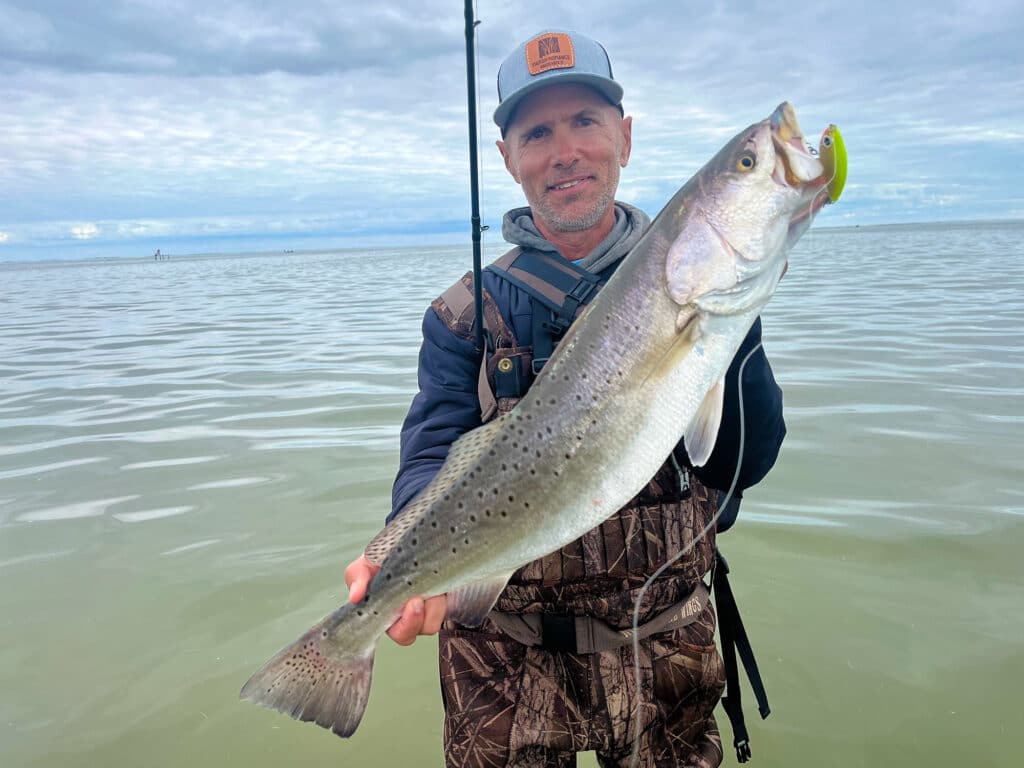
As founder of the popular community of trophy speckled-trout enthusiasts known as Speckled Truth, Chris Bush yawns at fish that cause most anglers to fight an irrepressible urge to wet their waders. The Holy Grail for trophy-trout diehards is a 30-inch fish, a true log of a lifetime, a fish that many anglers strive for, fully knowing they’ll likely never achieve. In his fishing career, Bush has landed six of them, and he’s got the pictures to prove it. So it took me less than two seconds to reply affirmatively when the San Antonio resident asked if I wanted to come to his home state and tag along with him in a quest to add another notch to his wading belt.
A regular at the Texas coast, Bush said the absolute best place to do it would be Port Mansfield in the winter. So eight months in advance, we put some December dates on the calendar, and Bush lined up area guide Capt. Joe Prado to ferry us.
I’ve got four decades of speckled trout fishing experience, and two decades ago wrote a book on the topic, but nearly all of my pursuits have occurred in the marshes of south Louisiana, an area that produces numbers of fish that beggar belief but doesn’t offer a realistic shot at a 30-incher.
In fairness to my home state, I did catch my PB (personal best) there — an 8-pound, 8-ouncer — but that was during a five-year run of absolutely ideal conditions in the late 1990s and early 2000s. That fish, a remarkably rotund 28-incher, fell for a Norton Mud Minnow on Calcasieu Lake. I’ve caught some 24- and 25-inch fish since, but nothing approaching 30 inches.

Bush and I had agreed to fish two days in Port Mansfield, and when the dates for our trip arrived, we couldn’t believe our good fortune. A hard cold front blew through two days prior, leaving in its wake partly to mostly cloudy skies with absolutely no wind. Prado had scouted in preparation, and picked out an extensive grass flat with maybe a foot of water between the surface and the tips of the seagrass. We donned waders and fanned out across the flat.
It wouldn’t take long for the hopes and dreams I’d spent eight months conjuring in my head to be dashed. To my left and right, Bush and Prado were catching plenty fish, and a significant percentage of those were over 5 pounds with a handful over seven. I was catching as many fish as they were, but my trout were significantly smaller, and I seemed to be a magnet for redfish, nothing but a time-waster when you’re targeting big trout.
Only a foolish guest thinks he knows more than his hosts, so I studied Bush and Prado, whose cadences were markedly different but seemed to be equally productive. At various times, I tried to mimic each, but my results stayed consistent — lots of reds and small trout. My biggest of the day were a couple of 4-pounders — certainly not slouches, but not what I had driven 10 hours for, particularly when 28-plus-inchers were clearly in the area.

That night, I racked my brain trying to figure out what I was doing differently than the two much more experienced Texas wade fishermen who put on an absolute clinic. I vowed to keep trying different cadences on our second and final trip to the flat, but unfortunately, I got more of the same — except in addition to the reds and small trout, I caught two black drum and a sheepshead.
At a certain point, I wanted to snap my rod in two because Prado and I had wandered off shoulder to shoulder, casting to the same water, and within a 45-minute stretch, he subdued five fish over 7 pounds. I caught nothing anywhere close.
Then Prado gave me a lesson that would completely change my fortune. The hot bait of the trip was a MirrOlure Soft-Dine, a lure with which I’d had very little experience, and Prado offered that I was fishing it too slowly. Indeed, on maybe 10 percent of my casts, I’d come back fouled with grass, while Prado never did. He told me to twitch the lure almost as fast as possible and intersperse random short pauses — but so short that the lure would never fall more than four inches below the surface.
It felt quite unnatural to me, but I took the guide’s advice, and I’ll be forever grateful I did. Almost instantly, the size of the trout I was catching grew noticeably, and finally, with only 30 minutes remaining on our final day, I felt a hard thump, set the hook and knew instantly I hadn’t hooked a redfish.

Large trout sometimes fully breach the surface, but often, they’re so big, they can’t. The best they can do is emerge halfway, shaking their massive maws in what every angler hopes is a futile attempt to throw the lure. The ever gracious Bush, who had been pulling for me to catch a big one like I was a Make-A-Wish kid, saw the bite and the initial eruption, and rushed over, ready to stick a Boga in the fish’s mouth.
His first attempt was a swing and a miss, but the exhausted fish had little left in the tank. It circled back, and Bush clamped the prongs of the tool around the fish’s bottom jaw. It pulled the Boga to more than 7 pounds. Although it wasn’t a 30-incher, and wasn’t even my biggest trout ever, it was the biggest I’d caught in almost two decades, and made the trip more than worth it.
Bush said he regularly stresses to his followers the importance of fishing Soft-Dines almost impossibly fast when wading shallow flats, and the difference it makes was reiterated to him with my experience. That may be elementary to Texas wade-fishing veterans, but those traveling to the state in hopes of catching a big one should definitely keep it in mind.








